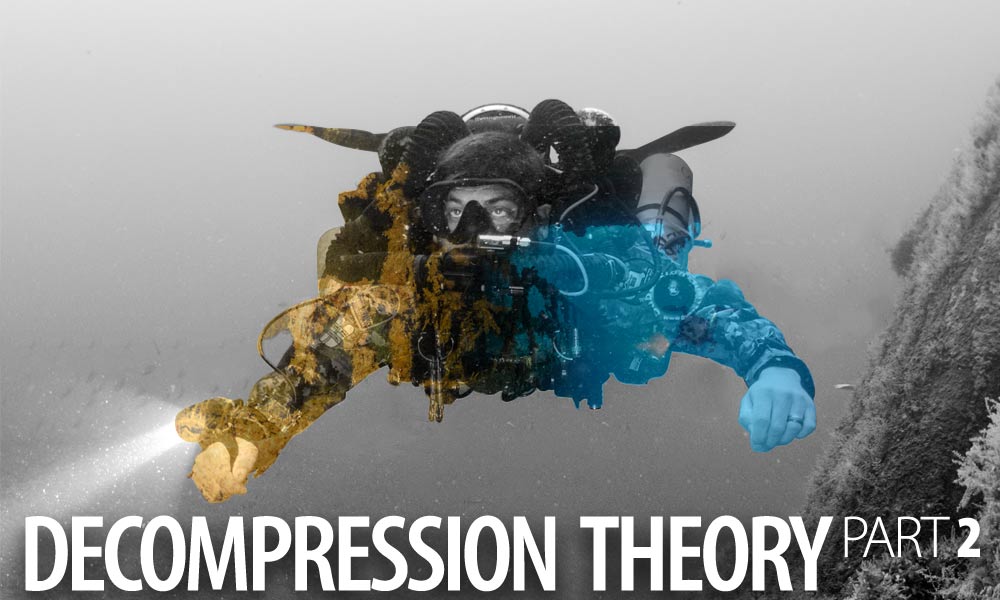DECOMPRESSION THEORY – PART 2: BENDING GOATS

by Richard Devanney:
The first section of this series on decompression theory attempted to describe the processes that determine how our bodies on and off-gas. This article continues on that theme and goes into a little more detail about what factors govern the amount and rate of on and off-gassing.
But before we proceed, it would be a good idea to do a little recap to get you back in the zone, focussing on Nitrogen (N2). At the surface the partial pressure of N2 is 0.79. Our bodies are saturated with N2 at this pressure, and through the normal process of respiration there is no net increase or decrease in the amount of it dissolved in our body tissues, they cannot hold any more at that pressure- this is what saturation means. Descending during a dive rapidly increases the ambient pressure surrounding our bodies. If we were to descend to 20m (3ATA) and stay there, eventually our tissues will be uniformly saturated at this depth, meaning that at 3ATA our tissues would have a PPN2 of 2.37. We aren’t losing any N2 because the N2 entering our lungs will also be at 3ATA (PPN2 2.37 also), so there is no diffusion gradient occurring. The only way to increase the amount of N2 in our tissues would be to descend further, say, to 30m or 4ATA (or to increase the percentage of N2 we breathe). Such a descent would increase the partial pressure of N2 in our lungs to 3.16, allowing diffusion and perfusion to work together to dissolve more N2 in our tissues until eventually the tissues go from 2.37 to 3.16 and become saturated at this pressure. This difference in partial pressures between the inspired gas mix and the tissue tension is known as the inert gas gradient (If that didn’t get you in the zone, read no further!). It is also worth noting at this point that the numbers I am using are not completely accurate, because as the gases we inhale enter the lungs they are diluted by gases that are already in the lungs, which has the effect of reducing the partial pressures slightly, but they work well enough as they are for illustrative purposes.



















Pridaj komentár